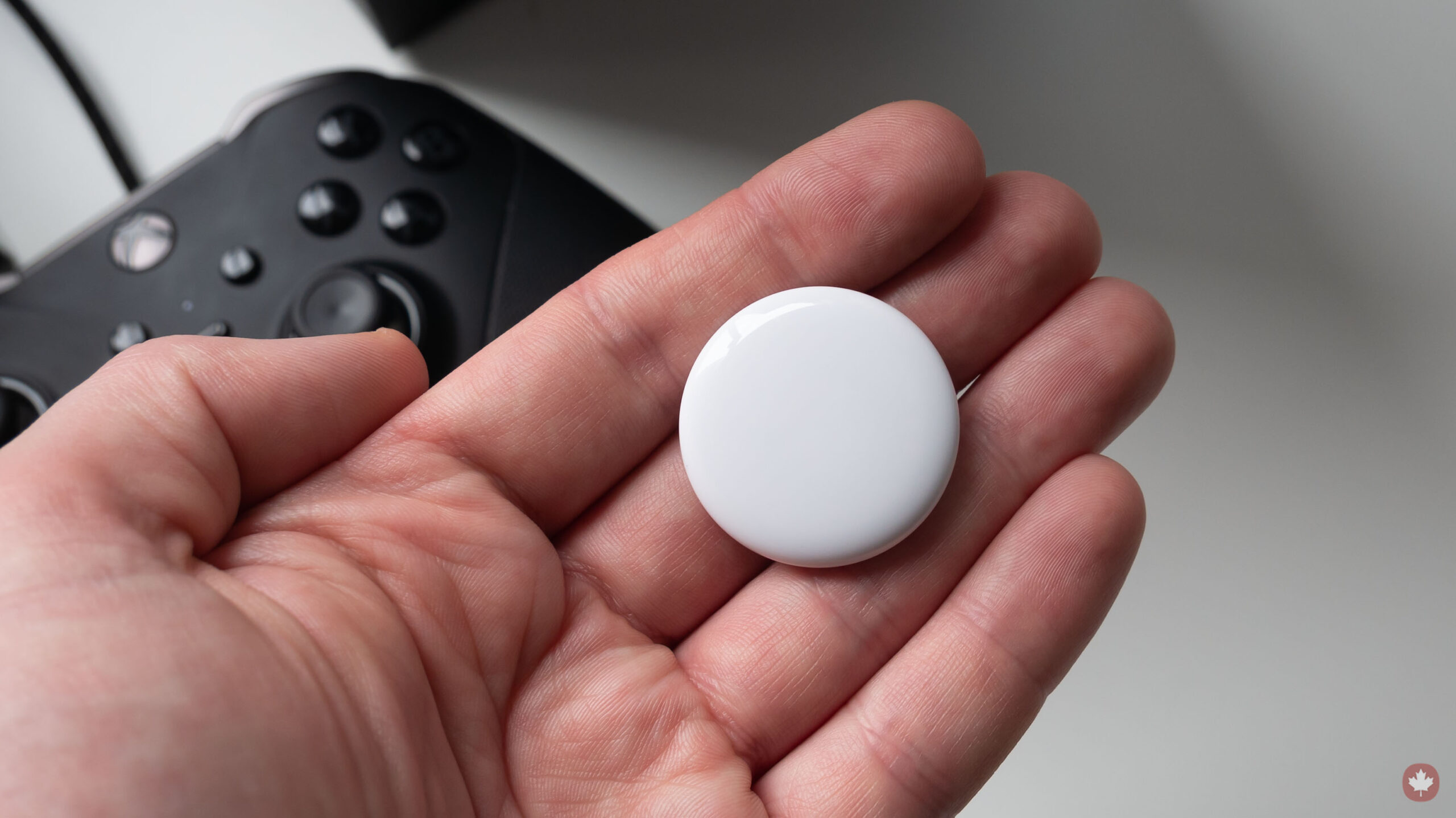
I’ve only spent a couple of hours with Apple’s AirTag so far, but I’m already impressed with the tracking device’s design and performance when compared to competing trackers from companies like Tile.
After writing rumours about the Bluetooth tracking device for several years, it’s great to see Apple’s AirTag finally release and to hold it in my hand.
Several questions about the tracker still remain, including if Apple’s ‘Find My’ network is truly as capable as the tech giant claims and if the Ultra Wideband (U1) chip really offers the pinpoint accuracy Apple touted during its recent ‘Spring Forward’ keynote.
A high-tech button
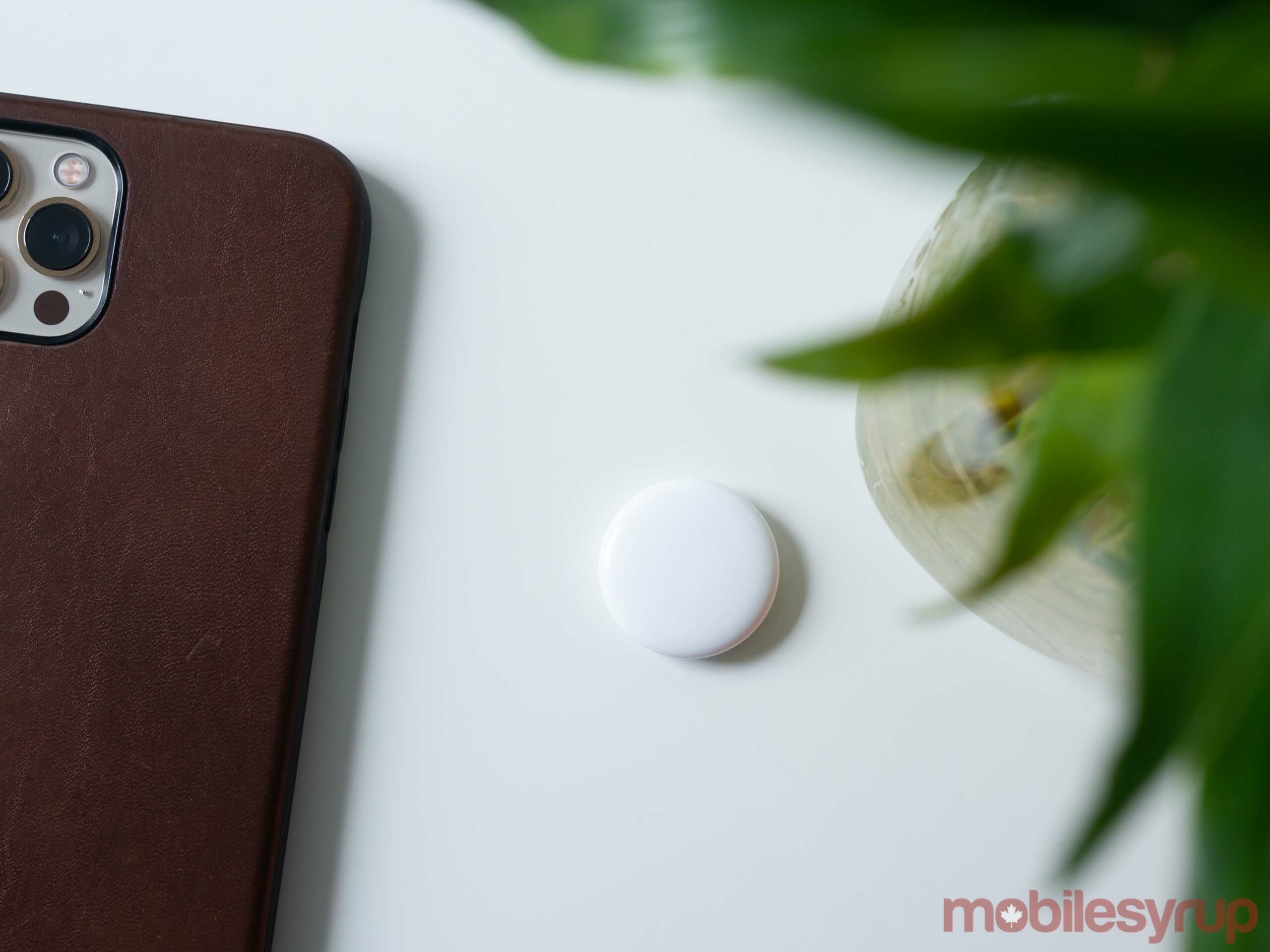
At first glance, Apple’s AirTag looks like a fancy Othello chip.
It features a relatively non-descript button-like white body and a glossy metal rear with an Apple logo and other information about the device like Ultra Wideband and Bluetooth LE support. The stainless steel back is an absolute fingerprint magnet, but given the AirTag is a tracking device you theoretically place inside another larger object like a bag, suitcase or purse, I wouldn’t consider this an issue.
However, it would have been great if there was a built-in way to easily stick or attach the AirTag to another object like a set of keys, similar to Tile’s Sticker tracker and Mate or Pro.

The AirTag has a fair amount of weight for its size at 11g, giving it a high-quality, premium feel. However, I also question whether I’d really want to slide it into my already heavy wallet. With that in mind, the AirTag is also quite thick at 8mm. This means when you slot it into something like a wallet, it bulges out, unlike Tile’s credit card-sized Slim tracker. Years ago, I tried to use an early Bluetooth tracker from a company called TrackR in my wallet, and the device ultimately bent and broke.
“Overall, the design of the AirTag is impressive and one of the best I’ve encountered as far as Bluetooth tracking devices are concerned.”
Other notable features include a built-in speaker that emits a noise when you’re syncing an AirTag with your iPhone and if you try to locate it, IP67 water resistance (1 metre, 30 minutes), an accelerometer, and unlike Tile’s earlier tracking devices, a battery that can be replaced easily following the one year Apple says it should last. Thankfully, rather than a proprietary cell, the AirTag uses a standard CR2032 watch battery.

The battery sits securely inside the AirTag and can only be removed after spinning its stainless steel back. Though none of the AirTags I have feature engraving, you can add a fun emoji or symbol to the white front of the tracker if you purchase it through Apple.com or the Apple Store app.
Overall, the design of the AirTag is impressive and one of the best I’ve encountered as far as Bluetooth tracking devices are concerned. It really feels like Apple’s premium take on the already established tracking device category is a step above anything Tile has released so far.
How it works
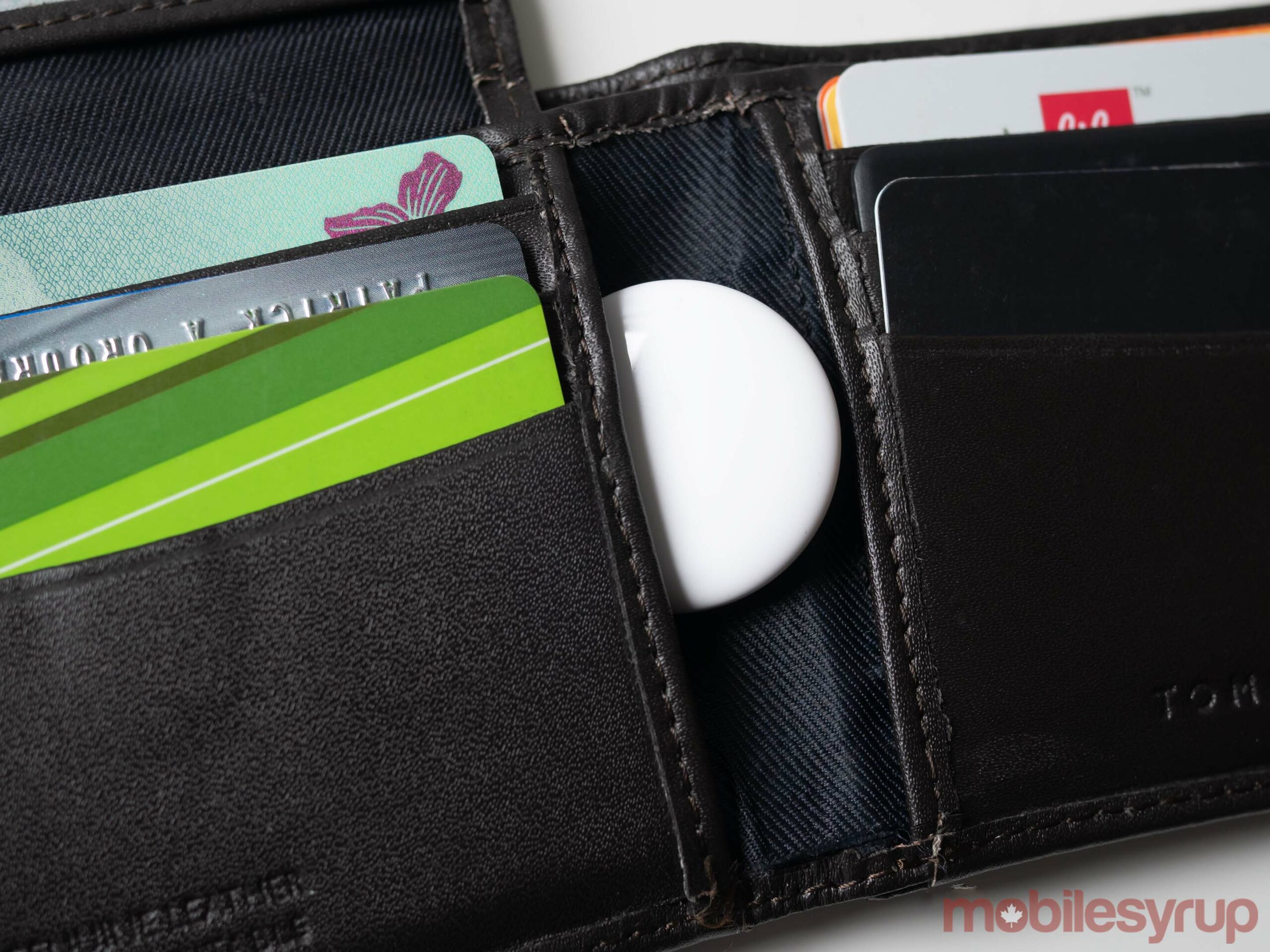
While it’s great the AirTag looks sleek, its aesthetic doesn’t really matter since you’ll likely tuck it away somewhere. That said, Apple is selling several AirTag key rings designed to show off the accessory if that’s more your speed — there’s even an Hermès AirTag luggage tag that costs an astounding $579.
What really matters when it comes to Apple’s AirTag is its performance, especially compared to the current Bluetooth tracking device king, Tile.
While I need to spend more time testing out the AirTag, my first impressions are pretty positive. The initial setup process takes just a few seconds and only requires you to pull a battery tab from the AirTag and move the device close to your iPhone.
“When locating a lost item with the AirTag’s and iPhone 12 series’ Ultra Wideband chip actually works, it feels like magic.”
Then, the next time you open up your ‘Find My’ app, your AirTag appears at the last known location. When you tap on the specific AirTag you’re looking for, you’ll have the option to play a sound. The connection process takes a second or two and then a low chime emits from the device. The sound isn’t particularly loud, but I’ve placed the AirTag in my living room, turned on the chime while working upstairs in my office, and could still easily hear it.
Other options include receiving a notification on your smartphone when the AirTag is found and turning on Lost Mode. Lost Mode prevents the AirTag — which is linked to your Apple ID — from pairing with another iPhone and makes a phone number and message appear on the smartphone owned by the person who finds your AirTag. Surprisingly, this feature also works on Android devices since NFC powers it.
U1 chip feels like magic when it works

When locating a lost item with the AirTag’s and iPhone 12 series’ Ultra Wideband chip actually works, it feels like magic.
To test out the feature, I asked my partner to hide the AirTag somewhere in our bedroom and I started my hunt downstairs. Selecting ‘Find’ from the Find My App fuses data from your iPhone 12’s camera, ARKit, the accelerometer and the gyroscope to give you various forms of feedback as you hunt for your lost item.
As you get closer to the AirTag you’ll feel the phone subtly vibrate, and a distance indicator in the bottom left corner tells you how far away you are. The vibration helps you indicate what direction you need to face to move towards the Tag. You can also play a noise any time to help you find it better.
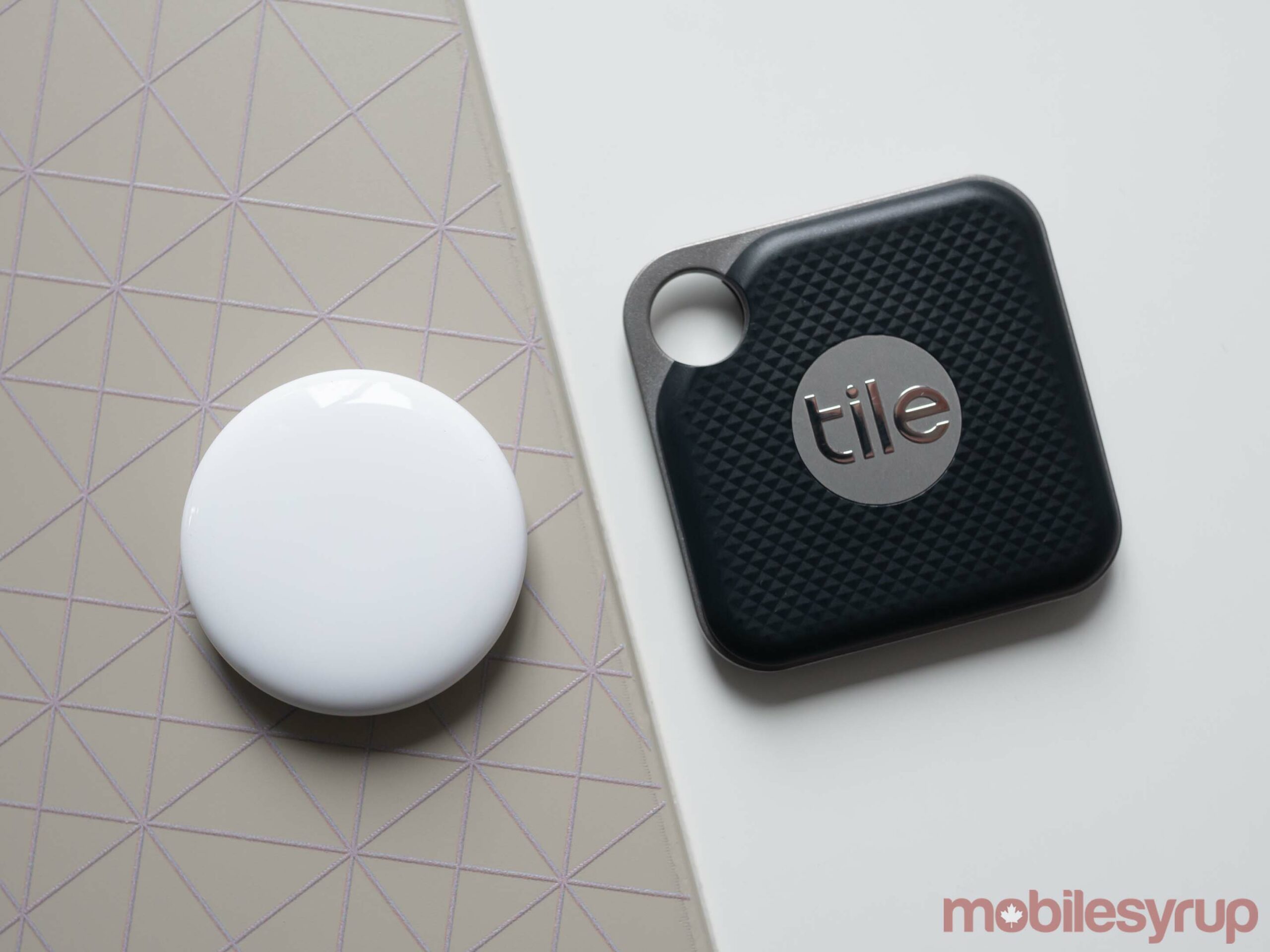
It’s worth noting it’s sometimes difficult to tell what floor an AirTag might be located on. For example, I had to first move to my living room to find out I had gone in the wrong direction and needed to head upstairs for the arrow to keep pointing me on the correct path.
I also encountered a few instances where the Find mode stated the AirTag’s signal was too weak despite only being a few metres away from the accessory. It’s unclear why this happened, but it only occurred a few times in my tests.
The U1 chip is also featured in the iPhone 11 series and the Apple Watch Series 6. Hopefully, it makes its way to more Apple devices in the future.
The largest crowd-sourced device network and privacy concerns
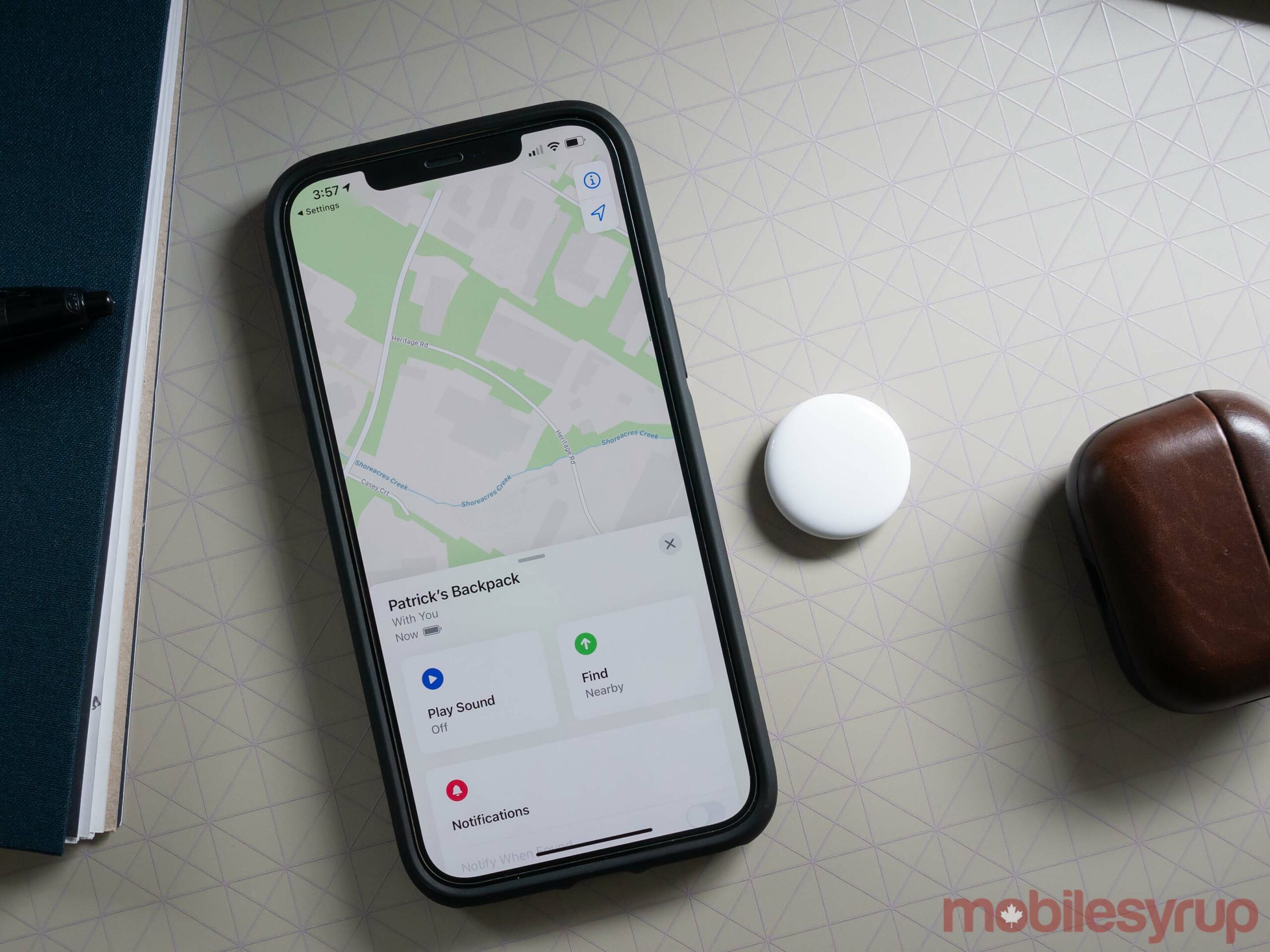
While the U1-powered Find feature is great, it’s really Apple’s massive network of devices that should, at least in theory, make the AirTag far better than any other tracking device. In the same vein as Tile’s crowd-sourced network of trackers, any Apple device that’s part of its network securely relays the location of your lost AirTag to iCloud, allowing you to view its location in the Find My app.
I need to spend more time with this feature, which is difficult right now since Ontario is still under a stay-at-home order, but the AirTag should have an advantage over similar trackers from Tile since there are billions of Apple devices in the world.

On the privacy side of things, Apple devices in its Find My network are always entirely anonymous and location data remains encrypted. This also applies to third-party companies like Chipolo that are part of the network. Of course, you have to take Apple’s word on its privacy claims surrounding Find My and the AirTag, but given the company’s mostly positive track record when it comes to anonymizing user data — especially when compared to Amazon and Google — they’re likely truthful.
One AirTag costs $39 and a pack of four costs $129. The AirTag will be available to order in Canada starting April 23rd.
MobileSyrup may earn a commission from purchases made via our links, which helps fund the journalism we provide free on our website. These links do not influence our editorial content. Support us here.


